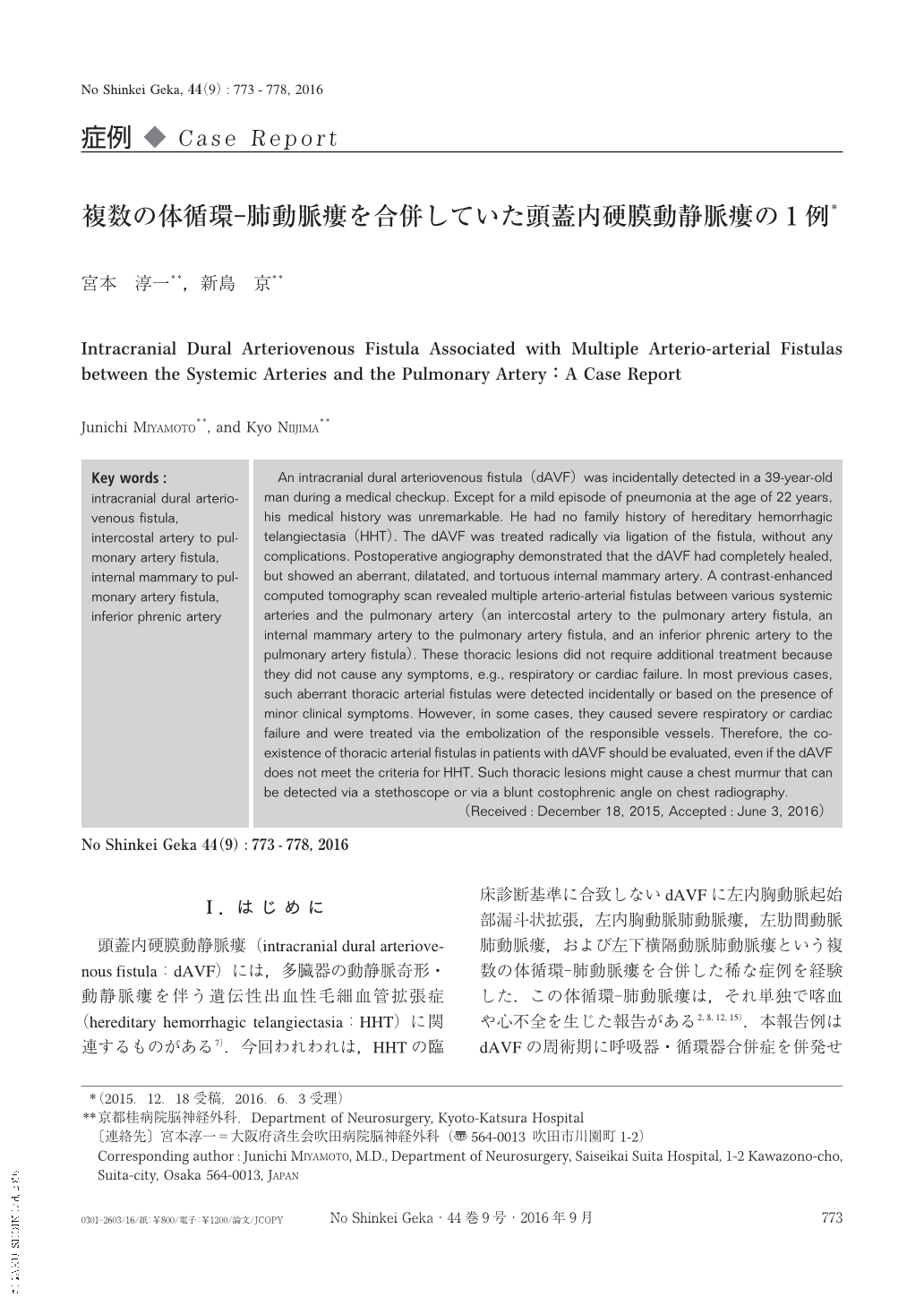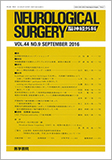Japanese
English
- 有料閲覧
- Abstract 文献概要
- 1ページ目 Look Inside
- 参考文献 Reference
Ⅰ.はじめに
頭蓋内硬膜動静脈瘻(intracranial dural arteriovenous fistula:dAVF)には,多臓器の動静脈奇形・動静脈瘻を伴う遺伝性出血性毛細血管拡張症(hereditary hemorrhagic telangiectasia:HHT)に関連するものがある7).今回われわれは,HHTの臨床診断基準に合致しないdAVFに左内胸動脈起始部漏斗状拡張,左内胸動脈肺動脈瘻,左肋間動脈肺動脈瘻,および左下横隔動脈肺動脈瘻という複数の体循環-肺動脈瘻を合併した稀な症例を経験した.この体循環-肺動脈瘻は,それ単独で喀血や心不全を生じた報告がある2,8,12,15).本報告例はdAVFの周術期に呼吸器・循環器合併症を併発せず加療されたが,この体循環-肺動脈瘻における,dAVFの周術期リスク評価に関わる留意点を文献的に考察して報告する.
An intracranial dural arteriovenous fistula(dAVF)was incidentally detected in a 39-year-old man during a medical checkup. Except for a mild episode of pneumonia at the age of 22 years, his medical history was unremarkable. He had no family history of hereditary hemorrhagic telangiectasia(HHT). The dAVF was treated radically via ligation of the fistula, without any complications. Postoperative angiography demonstrated that the dAVF had completely healed, but showed an aberrant, dilatated, and tortuous internal mammary artery. A contrast-enhanced computed tomography scan revealed multiple arterio-arterial fistulas between various systemic arteries and the pulmonary artery(an intercostal artery to the pulmonary artery fistula, an internal mammary artery to the pulmonary artery fistula, and an inferior phrenic artery to the pulmonary artery fistula). These thoracic lesions did not require additional treatment because they did not cause any symptoms, e.g., respiratory or cardiac failure. In most previous cases, such aberrant thoracic arterial fistulas were detected incidentally or based on the presence of minor clinical symptoms. However, in some cases, they caused severe respiratory or cardiac failure and were treated via the embolization of the responsible vessels. Therefore, the co-existence of thoracic arterial fistulas in patients with dAVF should be evaluated, even if the dAVF does not meet the criteria for HHT. Such thoracic lesions might cause a chest murmur that can be detected via a stethoscope or via a blunt costophrenic angle on chest radiography.

Copyright © 2016, Igaku-Shoin Ltd. All rights reserved.


